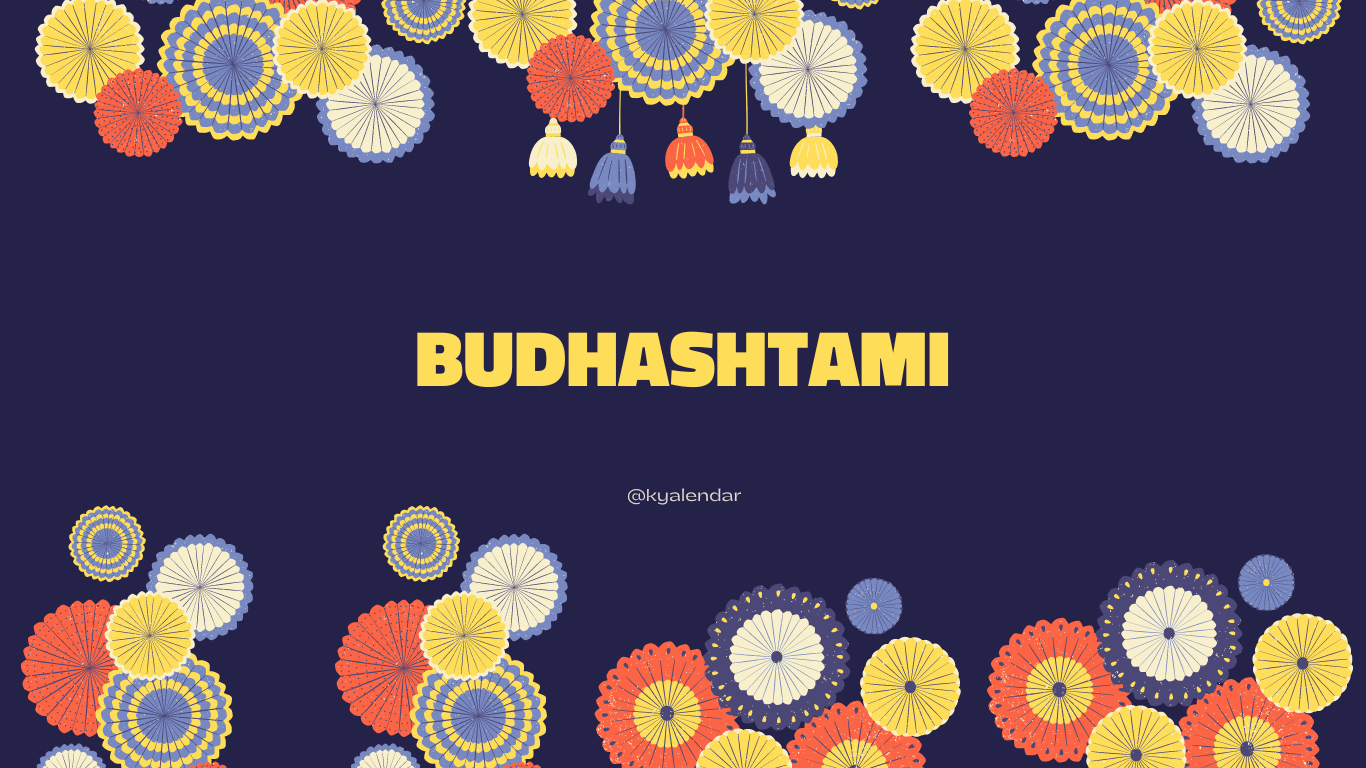
- This event has passed.
Budhashtami, also known as Gorakhakali Puja
September 25

Budhashtami, also known as Gorakhakali Puja, is a significant religious observance celebrated predominantly in the Indian state of Bihar and parts of Nepal. This festival honours the deity Gorakhakali, who is revered as a powerful and protective goddess in certain regional traditions. The observance of Budhashtami is marked by devotion, ritualistic worship, and communal participation, reflecting the deep-rooted cultural and spiritual practices of the region.
The Significance of Budhashtami/Gorakhakali Puja
Budhashtami falls on the eighth day of the lunar fortnight, specifically on the Ashtami (eighth) tithi of the waxing moon during the month of Bhadrapada (August-September). The day is dedicated to Gorakhakali, a form of the goddess Kali, who is considered a fierce protector and a symbol of strength and power. The puja is believed to invoke the goddess’s blessings for protection, prosperity, and the removal of obstacles.
Gorakhakali is often depicted as a formidable and dynamic deity, embodying both creative and destructive forces. Her worship is rooted in the belief that she has the power to ward off evil and ensure the well-being of her devotees. The rituals performed during Budhashtami are aimed at appeasing the goddess and seeking her favour.
Rituals and Observances
The celebration of Budhashtami involves a series of rituals and ceremonies that are conducted with great devotion. The day typically begins with an early morning bath, followed by the wearing of clean, traditional attire. The devotee’s home is often cleaned and decorated with flowers and religious symbols to create a sacred atmosphere.
The central ritual of Budhashtami is the Gorakhakali Puja, which involves the worship of an idol or image of the goddess. The puja begins with the offering of prayers and the recitation of mantras dedicated to Gorakhakali. The idol is adorned with garlands, and offerings of fruits, sweets, and flowers are presented. Incense and lamps are lit, creating an auspicious environment for the worship.
One of the unique aspects of Gorakhakali Puja is the preparation of special offerings, including elaborate dishes and sweets that are prepared specifically for the goddess. These offerings are made with the belief that they will be accepted by the deity and, in turn, bring blessings to the devotees.
Another significant part of the ritual is the performance of aarti, where the deity is honoured with the waving of lighted lamps. The aarti is accompanied by devotional songs and chants, which are sung by the participants to express their reverence and gratitude.
In some regions, the festival is marked by communal gatherings and feasts. Devotees come together to share the offerings and participate in the celebrations. This communal aspect of the festival reinforces the sense of unity and collective devotion among the participants.
The Cultural and Spiritual Impact
Budhashtami/Gorakhakali Puja is not only a religious observance but also an important cultural event. It reflects the rich traditions and values of the region, highlighting the role of worship in daily life. The festival serves as an occasion for people to come together, strengthen their spiritual bonds, and celebrate their cultural heritage.
The observance of Budhashtami also provides an opportunity for individuals to reflect on the virtues embodied by Gorakhakali. The goddess is seen as a symbol of strength, courage, and resilience. By performing the puja, devotees seek to imbibe these qualities and gain the goddess’s protection in their own lives.
Additionally, the festival encourages the practice of gratitude and humility. The act of offering prayers and seeking blessings is a reminder of the divine forces that are believed to guide and support human endeavours. It also fosters a sense of community and shared responsibility, as people come together to participate in the rituals and celebrate their faith.
Modern Relevance
In contemporary times, Budhashtami/Gorakhakali Puja continues to hold significance for many devotees. Despite the challenges of modern life, the festival remains a cherished tradition that brings together families and communities. The observance of the puja serves as a means of preserving cultural heritage and passing on spiritual practices to future generations.
Moreover, the principles associated with Gorakhakali—strength, protection, and overcoming obstacles—resonate with people in various aspects of their lives. The festival provides an opportunity for individuals to seek guidance and support in facing life’s challenges, and to reaffirm their commitment to their spiritual and cultural values.
The celebration of Budhashtami also reflects the adaptability of traditional practices. While the core rituals remain unchanged, modern adaptations and interpretations of the festival allow it to remain relevant and meaningful in a rapidly evolving world. This dynamic aspect of the celebration ensures that it continues to be a vibrant and integral part of the cultural and spiritual landscape.
Conclusion
Budhashtami/Gorakhakali Puja is a profound and multifaceted observance that combines religious devotion, cultural tradition, and communal unity. By honouring Gorakhakali, devotees seek to invoke the goddess’s blessings and embrace the values she represents. The festival serves as a reminder of the enduring significance of spiritual practices and the importance of maintaining a connection with one’s cultural heritage.
As devotees come together to celebrate Budhashtami, they not only pay homage to the deity but also reaffirm their commitment to the virtues of strength, courage, and resilience. The rituals and celebrations associated with the festival provide a meaningful and enriching experience, reinforcing the bonds of community and faith.
In essence, Budhashtami is a celebration of both the divine and the human spirit, reflecting the deep-seated values and traditions that continue to shape and inspire the lives of its devotees.